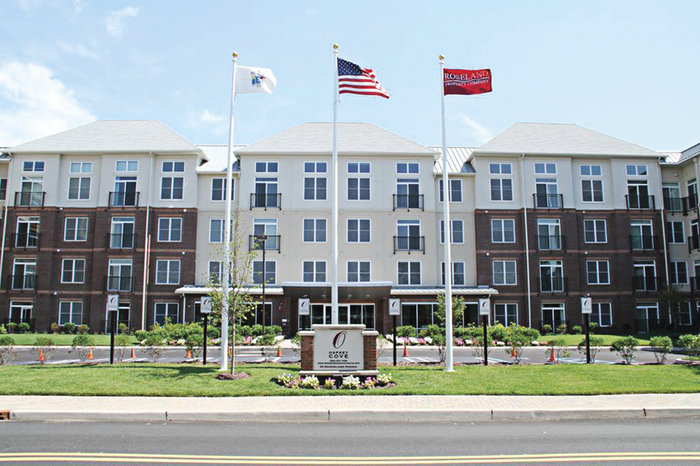With its recent foray into the residential market, the Secaucus-based developer Hartz Mountain Industries, Inc. has continued its commitment to sustainable design with the luxury residential building Osprey Cove, which is located at 45 Meadowlands Parkway in Secaucus.
The company recently announced that Osprey Cove just received its LEED Silver certification, a rating system developed by the US Green Building Council (USGBC) for sustainable building and development.
The 116-unit development is the latest project in a long list of eco-friendly initiatives that also includes rooftop solar paneling on 13 buildings in Secaucus, and a solar ground array in Hamilton.
Evolving toward sustainability
“Osprey Cove is a continuation of what we started back in 07,” said Peter Michelis, executive vice president for development, design, and construction. Michelis has served in this role the past five years, which entails overseeing the engineering, construction, and design aspects of all projects.
Hartz Mountain Industries, Inc. is a privately-held company that owns and manages approximately 200 properties in the northern New Jersey and New York area, adding up to more than 35 million square feet.
The company launched its “Green Building and Sustainability Initiative” in 2007, which was spearheaded by CEO Emmanuel Stern.
“It is basically smart business and helps the environment.” – Peter Michelis
____________
He said that sustainable design offers an economic benefit to the company by reducing costs such as those associated with water and energy consumption.
Recycled materials, efficient bulbs
“We made the decision early on that we should make it green,” said Michelis regarding Osprey Cove. “It just made sense.”
Osprey Cove complements the shore of the 13,000 acre Meadowlands estuary preserve and incorporates sustainable design with the use of recycled materials where possible, motion sensors on all lighting in common hallways and elevators, as well as energy-efficient appliances in all of the units.
All of the building’s characteristics were vetted through LEED credits and guidelines. LEED stands for Leadership in Energy and Environmental Design. LEED-certified buildings are designed to lower operating costs, reduce waste sent to landfills, conserve energy and water, reduce harmful greenhouse gas emissions, and provide healthier and safer environments for occupants, according to the USGBC, which developed the framework in 2000 for builders and operators.
Michelis said that there are a number of questions the company tackles with the help of a consultant when working toward LEED certification, such as whether the building materials are sustainable, whether they employ recyclable content, and whether the design improves air quality.
“Overall, the entire design looked at improving the environment,” said Michelis.
In choosing the kitchen cabinets, for example, the developer “made sure it is certified wood that is sustainable and easily grown.”
He added that the “floors are bamboo, which is easily reproduced and grown,” and doesn’t contribute to deforestation. Michelis noted that the paper in the sheet rock was a recycled material.
“Materials in general incorporate some recycled content,” said Michelis.
Some hold the perception that employing green techniques in building design may cost more up front than a standard approach. But according to Michelis, “the incremental cost was negligible to go silver. In terms of maintaining the building – it keeps costs down. From our perspective, the materials are more durable.”
Company-wide approach
Hartz headquarters at 400 Plaza has received LEED certification, and includes waterless urinals, motion-censor lights, and other upgrades, such as modified landscaping to reduce water usage. Sheraton Lincoln Harbor Hotel in Weehawken, also a Hartz property, was one of the first green hotels, according to Michelis.
“Pretty much all of our important buildings are going to be LEED,” said Michelis. “We have some buildings going up on the waterfront. Those will be designed and constructed following LEED guidelines.”
The waterfront properties include residential buildings, such as the Estuary in Weehawken, which is scheduled for completion at the end of this year, another property in Jersey City, and one in Secaucus that will be a conversion of an existing property.
SIDEBAR:
Solar Powered
The first Hartz building to get solar power in 2008 was the Meadowlands Convention Center in Secaucus. Since then, the developer has installed 20 MegaWatts (MW) of solar across 15 buildings. Most of the company’s solar projects are in Secaucus. The U.S. now has over 6,400 MW of installed solar electric capacity, enough to power more than 1 million average American households, according to Solar Energy Industries Association (SEIA), a trade group.
Adriana Rambay Fernández may be reached at afernandez@hudsonreporter.com.
